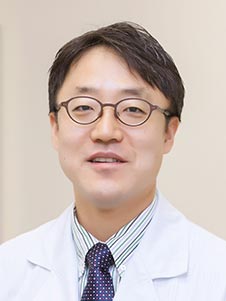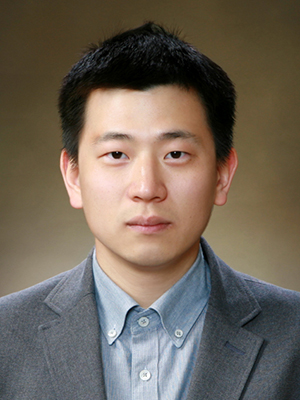News | COMPLEX PCI 2024
State-of-the-Art Left Main PCI
Pioneering Precision in Left Main PCI

Duk-Woo Park
Asan Medical Center, Republic of Korea
At the 9th COMPLEX PCI 2024 conference, Dr. Duk-Woo Park from Asan Medical Center, Seoul, delivered a thought-provoking plenary lecture on “State-of-the-Art Left Main PCI: Current Evidence and What Are the Next?”. His presentation offered a meticulous exploration of the latest advancements in managing left main coronary artery disease (LMCAD), combining evidence-based practices, cutting-edge technologies, and a patient-centered approach.
Dr. Park emphasized the transformative role of multidisciplinary Heart Teams in guiding treatment decisions for LMCAD. Highlighting updates from the 2024 European Society of Cardiology (ESC) guidelines, he pointed out the growing reliance on randomized controlled trials (RCTs), which have shaped current clinical approaches. The nuanced interplay between patient-specific factors and anatomical complexity underscores the importance of collaborative decision-making when choosing between percutaneous coronary intervention (PCI) and coronary artery bypass grafting (CABG).
Intracoronary imaging and physiological assessments took center stage as Dr. Park outlined their critical role in procedural success. Tools like intravascular ultrasound (IVUS), optical coherence tomography (OCT), and fractional flow reserve (FFR) are now indispensable in addressing lesion severity, ensuring precise stent placement, and optimizing outcomes. Recent RCTs such as RENOVATE-COMPLEX and OCTIVUS have consistently demonstrated improved outcomes with imaging-guided PCI, reducing target vessel failure and major adverse cardiac events.
Dr. Park shared advanced criteria for stent optimization, including minimum stent area thresholds for left main arteries, developed at Asan Medical Center. For example, achieving an MSA of ≥8 mm² for the proximal left main is a key determinant of long-term success.
Dr. Park introduced emerging stent technologies, including the DynamX bioadaptive stent, and discussed novel techniques like DK-CRUSH and TAP for managing bifurcation lesions. Studies such as INFINITY-SWEDEHEART and DCB-BIF highlight the benefits of these innovations, from enhanced vessel function to reduced target lesion failure rates.
Physiology-guided approaches, such as FFR, address the "visual-functional mismatch" often seen in left main lesions, ensuring interventions are limited to functionally significant stenoses. Dr. Park discussed ongoing trials, including the FATE-MAIN study, which is poised to refine these strategies further.
In addition, he outlined a tiered decision-making framework that incorporates imaging and physiology to assess intermediate lesions, integrating anatomical and functional data for precise stratification.
Dr. Park explored emerging tools like artificial intelligence (AI) and predictive algorithms that promise to revolutionize imaging-guided PCI by automating risk assessment and stent optimization. He also touched on evolving antiplatelet regimens, referencing findings from the TAILORED-CHIP trial, which balance thrombotic and bleeding risks through personalized therapy.
In conclusion, Dr. Park underscored the importance of collaboration, technological innovation, and adherence to evidence-based protocols in left main PCI. He expressed optimism about the growing capabilities of PCI techniques, which are now achieving outcomes comparable to CABG in complex cases. His lecture not only illuminated the latest advancements but also provided a forward-looking framework for interventional cardiologists navigating the complexities of LMCAD.
Opening & Complex PCI Workshop 1:
Left Main & Bifurcation
Thursday, November 28, 1:00 PM ~ 2:15 PM
Main Arena
Edited by

Ju Hyeon Kim, MD
Asan Medical Center, Korea (Republic of)

Duk-Woo Park
Asan Medical Center, Republic of Korea
At the 9th COMPLEX PCI 2024 conference, Dr. Duk-Woo Park from Asan Medical Center, Seoul, delivered a thought-provoking plenary lecture on “State-of-the-Art Left Main PCI: Current Evidence and What Are the Next?”. His presentation offered a meticulous exploration of the latest advancements in managing left main coronary artery disease (LMCAD), combining evidence-based practices, cutting-edge technologies, and a patient-centered approach.
Dr. Park emphasized the transformative role of multidisciplinary Heart Teams in guiding treatment decisions for LMCAD. Highlighting updates from the 2024 European Society of Cardiology (ESC) guidelines, he pointed out the growing reliance on randomized controlled trials (RCTs), which have shaped current clinical approaches. The nuanced interplay between patient-specific factors and anatomical complexity underscores the importance of collaborative decision-making when choosing between percutaneous coronary intervention (PCI) and coronary artery bypass grafting (CABG).
Intracoronary imaging and physiological assessments took center stage as Dr. Park outlined their critical role in procedural success. Tools like intravascular ultrasound (IVUS), optical coherence tomography (OCT), and fractional flow reserve (FFR) are now indispensable in addressing lesion severity, ensuring precise stent placement, and optimizing outcomes. Recent RCTs such as RENOVATE-COMPLEX and OCTIVUS have consistently demonstrated improved outcomes with imaging-guided PCI, reducing target vessel failure and major adverse cardiac events.
Dr. Park shared advanced criteria for stent optimization, including minimum stent area thresholds for left main arteries, developed at Asan Medical Center. For example, achieving an MSA of ≥8 mm² for the proximal left main is a key determinant of long-term success.
Dr. Park introduced emerging stent technologies, including the DynamX bioadaptive stent, and discussed novel techniques like DK-CRUSH and TAP for managing bifurcation lesions. Studies such as INFINITY-SWEDEHEART and DCB-BIF highlight the benefits of these innovations, from enhanced vessel function to reduced target lesion failure rates.
Physiology-guided approaches, such as FFR, address the "visual-functional mismatch" often seen in left main lesions, ensuring interventions are limited to functionally significant stenoses. Dr. Park discussed ongoing trials, including the FATE-MAIN study, which is poised to refine these strategies further.
In addition, he outlined a tiered decision-making framework that incorporates imaging and physiology to assess intermediate lesions, integrating anatomical and functional data for precise stratification.
Dr. Park explored emerging tools like artificial intelligence (AI) and predictive algorithms that promise to revolutionize imaging-guided PCI by automating risk assessment and stent optimization. He also touched on evolving antiplatelet regimens, referencing findings from the TAILORED-CHIP trial, which balance thrombotic and bleeding risks through personalized therapy.
In conclusion, Dr. Park underscored the importance of collaboration, technological innovation, and adherence to evidence-based protocols in left main PCI. He expressed optimism about the growing capabilities of PCI techniques, which are now achieving outcomes comparable to CABG in complex cases. His lecture not only illuminated the latest advancements but also provided a forward-looking framework for interventional cardiologists navigating the complexities of LMCAD.
Opening & Complex PCI Workshop 1: Left Main & Bifurcation
Thursday, November 28, 1:00 PM ~ 2:15 PM
Main Arena
Edited by

Ju Hyeon Kim, MD
Asan Medical Center, Korea (Republic of)

Leave a comment